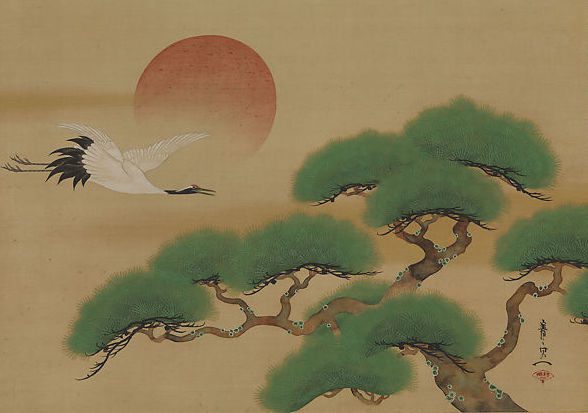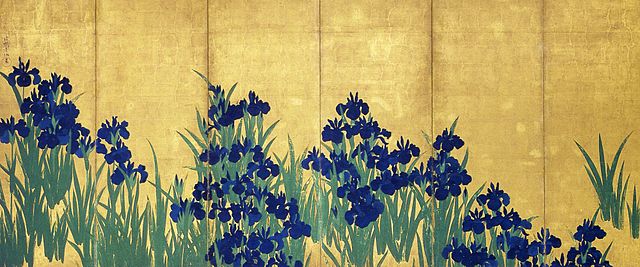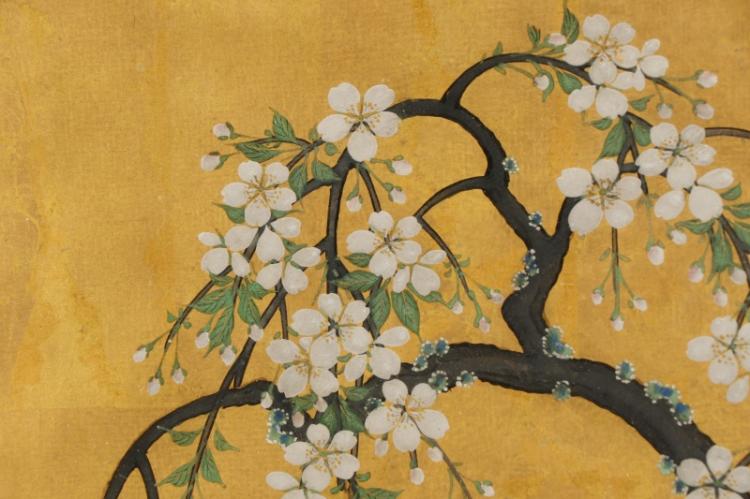Rinpa art and Japan: Buddhism, high culture, and nature
Lee Jay Walker
Modern Tokyo Times

Rinpa (Rimpa) art is one of the most distinctive art forms connected to high culture to emanate in Japan. Ukiyo-e is equally distinctive. However, the cultural traits span various angles. For example, the natural lifestyles of people, historical events, erotica (shunga), kabuki, landscapes, murders, nature, and an array of artistic themes. Therefore, the high culture angle fits naturally with rinpa – unlike ukiyo-e.
One can imagine Nichiren Buddhist merchants who sought to fuse art, culture, faith, and ideas before rinpa answered their beck and call. Thus wealthy Nichiren Buddhist merchants and aristocratic families supported the rinpa art movement.

The Met Museum says, “The Rinpa School (which can also be pronounced Rimpa) was a key part of the Edo period revival of indigenous Japanese artistic interests described by the term yamato-e. Paintings, textiles, ceramics, and lacquerwares were decorated by Rinpa artists with vibrant colors applied in a highly decorative and patterned manner. Favored themes, which often contained evocative references to nature and the seasons, were drawn from Japanese literature, notably The Tale of Genji, The Tales of Ise, and Heian-period poems composed by courtiers.”
The founding fathers of this art movement – Hon’ami Kōetsu and Tawaraya Sōtatsu – paved the way for future artists to continue and expand on earlier rinpa artists. Hence, the environment of Kyoto was a fitting place for this esteemed art form. Especially with Koyasan, Nara, and the cultural angle of Lake Biwa being within easy reach of Kyoto.

The MOA Museum of Art says, “The Rinpa School is unique in that, unlike other schools such as Kanō and Tosa, the heritage was perpetuated not through familial lines or clan-retainership, but by those who had an affinity with the style. It came about in the early Edo period, with Hon’ami Kōetsu and Tawaraya Sōtatsu being forerunners, and it flourished during the years of Genroku (1688 – 1704) with the work by Ogata Kōrin and his brother Kenzan. Toward the end of the Edo period (the late 18th century), artists who admired Kōrin, such as Sakai Hōitsu and Suzuki Kiitsu, endeavored to revive the tradition. Throughout the period, these artists produced many different designs in a variety of genres not only painting on folding screens and hanging scrolls, but also kogei handicrafts such as writing boxes, kimonos, folding fans, portable containers and pottery.”
Interestingly, the rinpa founding fathers were born in the pre-Edo Period of the sixteenth century. Thus, despite the roots of rinpa being the early Edo Period, the founding fathers belong to the pre-Edo era and the period of centralization that began with Oda Nobunaga. Therefore, the last great rinpa artist Kamisaka Sekka (1866–1942), highlights the longevity of this cultural art form.

PLEASE DONATE TO HELP MODERN TOKYO TIMES
Modern Tokyo News is part of the Modern Tokyo Times group
DONATIONS to SUPPORT MODERN TOKYO TIMES – please pay PayPal and DONATE to sawakoart@gmail.com
http://moderntokyotimes.com Modern Tokyo Times – International News and Japan News
http://sawakoart.com – Sawako Utsumi’s website and Modern Tokyo Times artist
https://moderntokyonews.com Modern Tokyo News – Tokyo News and International News
PLEASE JOIN ON TWITTER
https://twitter.com/MTT_News Modern Tokyo Times
PLEASE JOIN ON FACEBOOK